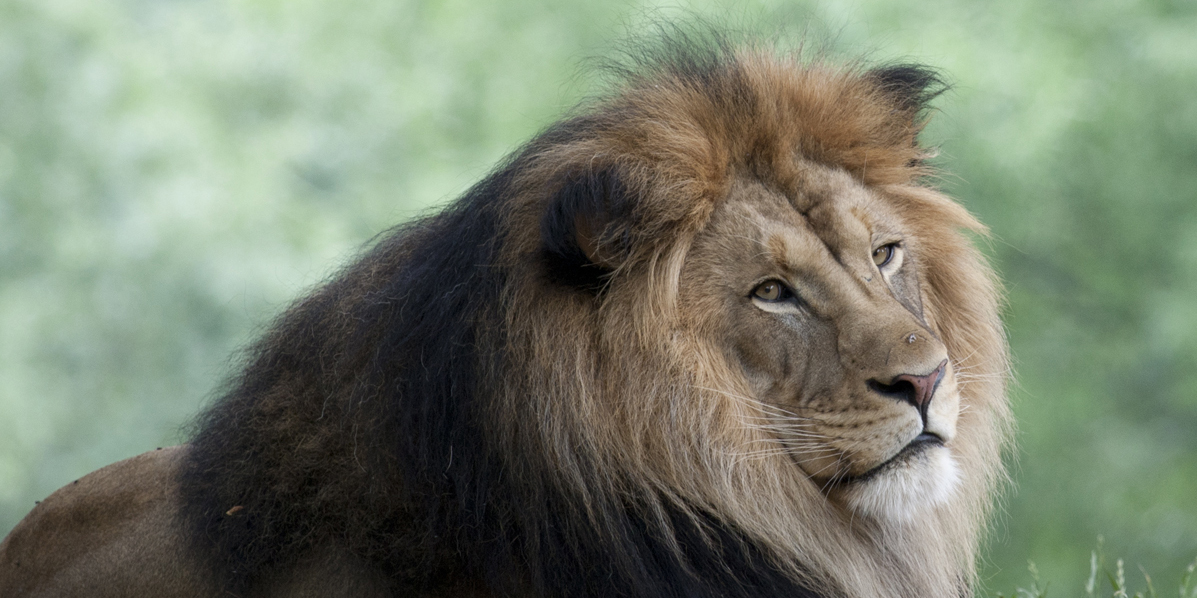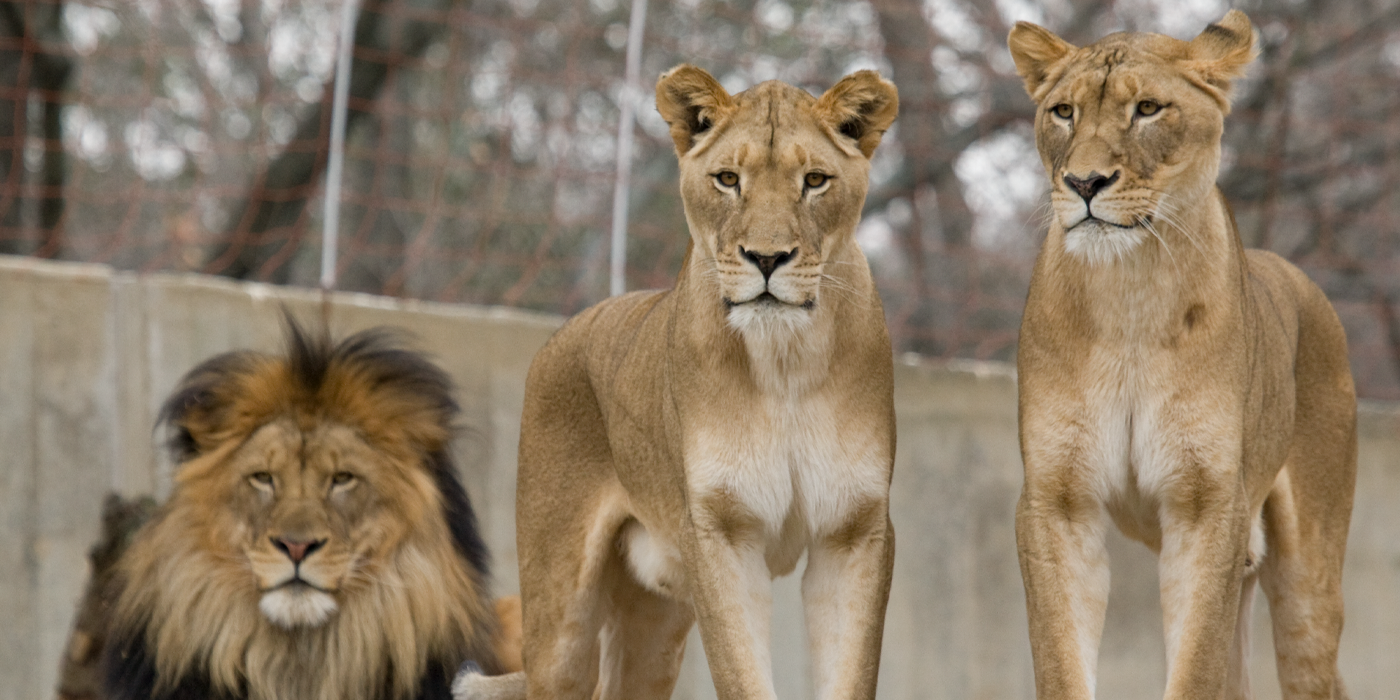How Do You Care for an Aging Lion?
We’re fortunate to have six wonderful African lions here at the Smithsonian’s National Zoo and Conservation Biology Institute: 16-year-old male Luke, 18-year-old female Naba, and 17-year-old female Shera, as well as Luke and Shera’s 8-year-old offspring — female Amahle and males Shaka and Jumbe.
Lions are considered adults by age 2 or 3. They typically live to be 16 to 22 years old in zoos, longer than their lifespans in the wild. At over 15 years old, we consider Luke, Naba and Shera to be geriatric lions. As animals age, they have more health care needs. Fortunately, our lions are eager to participate in training that helps us care for them.

Training is always voluntary, so the cats can choose to participate or not. The lions always receive positive outcomes (mostly food) when they complete desired behaviors. We call this positive conditioning. Most of the lions get small chunks of beef or balls of ground beef. We also feed them goat’s milk, beef blood and horse blood (sometimes frozen into “bloodcicles”). Other creative treats include canned baby food, turkey or beef broth, elk, and lamb.
Each behavior we train for helps us address health concerns for our geriatric lions. But often, all six lions join in! The younger lions are very smart and seem to enjoy training too.
Physical Checks
Our lions often get cuts, scrapes or small injuries. If you have a pet dog or cat, you could touch their paws or tails to check on small wounds. But it’s not that easy with a lion! We train our lions to stand, sit and lay in different positions so we can see all parts of their bodies. We also train them to open their mouths, so we can check for dental issues.
The “open mouth” behavior was very useful when lion Naba began chewing strangely in March 2022. She was drooling and had trouble eating. Thanks to our training, we could ask Naba to show us her teeth by holding two fingers in front of her mouth while saying “open.” We saw that she had some broken teeth and took photos for our veterinarians. Soon after, a special veterinary dentist treated Naba and pulled three of her teeth. We continued to use the “open mouth” behavior to check on her until she fully healed.
Injections
No one enjoys getting a shot at the doctor, including lions! Training helps us give our lions the injections they need. When we say, “line up,” and move our hands along their enclosures, the lions lay down with their sides and hips pressed against the mesh. Then, a veterinarian can give them an injection. Five of our six lions also know how to “scooch” to push their hips even closer to us. Shaka is still working on it!
We also give practice injections to the lions, so they get used to the feeling of a needle. We start with a capped needle, then move to a dull needle, a regular needle, and a saline injection until the lions show no fear or hesitation about getting a shot.
As our lions get older, training makes it easier for them to get vaccines and other injections in a calm, stress-free manner. All six of our lions have voluntarily received two doses of the COVID-19 vaccine.
Blood Draws and Blood Pressure
We routinely collect blood from all six lions using the cue “tail” to ask the lions to let us touch their tails. They flip their tails through a special panel or allow us to gently pull their tails out of their enclosures using a snake hook. Then, we can safely draw blood from a vein.
Collecting regular blood samples from Luke, Naba and Shera lets us monitor their renal (kidney) health. Kidneys can be a big health issue for geriatric lions. Our lions only have full exams under anesthesia every two years, so being able to collect blood while they are awake makes a big difference.
We also use the lions’ tails to check their blood pressure, using a machine designed for cats and dogs. Blood pressure values help us learn about kidney health too. And we’re using the blood pressure data we collect to help lions across the world! As far as we know, there’s no existing collection of blood pressure values from awake lions. We’re collecting readings from our lions every week to build up a database. We hope the information will help improve medical care for other lions in zoos and in the wild!
Laser Therapy
Our last medical behavior is unique to our lion, Luke. Several years ago, we learned that Luke has a compression of two of his cranial vertebrae (basically two of his vertebrae were pushed together and are pinching his spinal cord). We don’t know how this happened — it could have been several independent incidents or a single incident, like a crash into something while he was running. Nobody saw it happen, so we are left to guess.
To reduce inflammation, we use laser therapy twice a week to treat the muscles along Luke’s spine and shoulders. With training, we can do this while Luke is awake and sitting still. He seems to like how the laser feels — sometimes, he’ll even sit still without eating any treats!
Working Together Safely
Training our lions is a group effort! I’m the lead trainer, but our other Great Cats keepers, including Charlie, Dell, our assistant curator Leigh, and our curator Craig, can perform these tasks too. Safety is our main priority, so we always have two keepers present when touching a lion. One person can focus on the lion’s attention while the other can concentrate on staying safe. Our veterinarians and vet technicians have also practiced drawing blood, taking blood pressure readings, and conducting laser therapy with the lions. Having the whole team ready to help means the lions can always receive treatment, no matter who is working.
Next time you’re at the Zoo, stop by the Great Cats exhibit to see our lions and tigers. And if you see one of our keepers around, please ask us any questions you might have!
The “How Do You …” series gives readers an insider’s look at how animal keepers use activities, food, training and toys to care for animals at the Smithsonian’s National Zoo and Conservation Biology Institute. How do you get an elephant to exercise, safely introduce two songbirds or prepare a cheetah for a veterinary exam? Find out how enrichment stimulates the senses, why training builds trust, and how keepers come up with new ways for animals to explore and use their natural behaviors each day.
Related Species:



